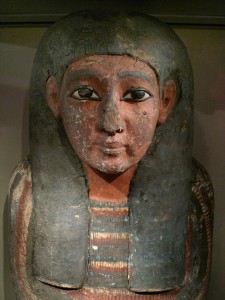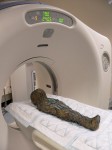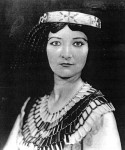 University of Bristol Egyptologist Aidan Dodson was working on an ambitiously tedious project to catalogue every Egyptian sarcophagus in English and Welsh provincial museums when he discovered that a coffin on display in Torquay Museum was of exceptional quality, extremely rare and far older than the museum had realized. Dodson puts the age of the coffin to somewhere between the reign of 18th Dynasty pharaohs Ahmose I and the early reign of Thutmose III, ie, somewhere between 1525 and 1470 B.C. The museum estimated it dated to 700 B.C.
University of Bristol Egyptologist Aidan Dodson was working on an ambitiously tedious project to catalogue every Egyptian sarcophagus in English and Welsh provincial museums when he discovered that a coffin on display in Torquay Museum was of exceptional quality, extremely rare and far older than the museum had realized. Dodson puts the age of the coffin to somewhere between the reign of 18th Dynasty pharaohs Ahmose I and the early reign of Thutmose III, ie, somewhere between 1525 and 1470 B.C. The museum estimated it dated to 700 B.C.
The child’s sarcophagus, just under 4 feet in length, was cut from a single block of cedar wood then covered in plaster-impregnated linen. The linen was painted white and the face red (indicating that the mummy within was male). The eyes are inlaid volcanic glass and limestone mounted in bronze. The design is so rare there is only one other similar example in the UK. Not even the British Museum has a coffin like this one, notes Torquay Museum curator Barry Chandler, bursting with glee.
It was the quality of the inlaid eyes, the depth of detail in the realistically modelled knees that first caught Dr. Dodson’s eye. That kind of ornamentation was reserved for extremely high ranking personages like royalty or government ministers. For it to be found on a child’s coffin underscores how important the family must have been.
 Unfortunately we don’t know who that family was because the names of the child and his parents have been scratched out. The mummy inside is a thousand years younger than the coffin, so the names were probably erased when the new occupant was installed. The 2,500-year-old mummified boy within, wrapped in linen and a beaded net with figures of deities attached to it to protect the organs of the boy for the afterlife, was given a CT scan at Torbay Hospital in 2006. They found that the boy was three or four years old when he died, but could not determine the cause of death. We don’t know his name either, but the museum has dubbed him Psamtek.
Unfortunately we don’t know who that family was because the names of the child and his parents have been scratched out. The mummy inside is a thousand years younger than the coffin, so the names were probably erased when the new occupant was installed. The 2,500-year-old mummified boy within, wrapped in linen and a beaded net with figures of deities attached to it to protect the organs of the boy for the afterlife, was given a CT scan at Torbay Hospital in 2006. They found that the boy was three or four years old when he died, but could not determine the cause of death. We don’t know his name either, but the museum has dubbed him Psamtek.
 The coffin and Psamtek were donated to the museum in 1956 by Lady Winaretta Leeds, scion of the Singer sewing machine dynasty and committed amateur Egyptologist. She traveled extensively in the Middle East, and is thought to have acquired the coffin in the 1920s. The child’s coffin and mummy were in storage for decades until they became the stars of the newly refurbished museum in 2007. Psamtek in particular drew crowds because he is the only human mummy currently on display in the UK. Now his coffin can finally compete.
The coffin and Psamtek were donated to the museum in 1956 by Lady Winaretta Leeds, scion of the Singer sewing machine dynasty and committed amateur Egyptologist. She traveled extensively in the Middle East, and is thought to have acquired the coffin in the 1920s. The child’s coffin and mummy were in storage for decades until they became the stars of the newly refurbished museum in 2007. Psamtek in particular drew crowds because he is the only human mummy currently on display in the UK. Now his coffin can finally compete.